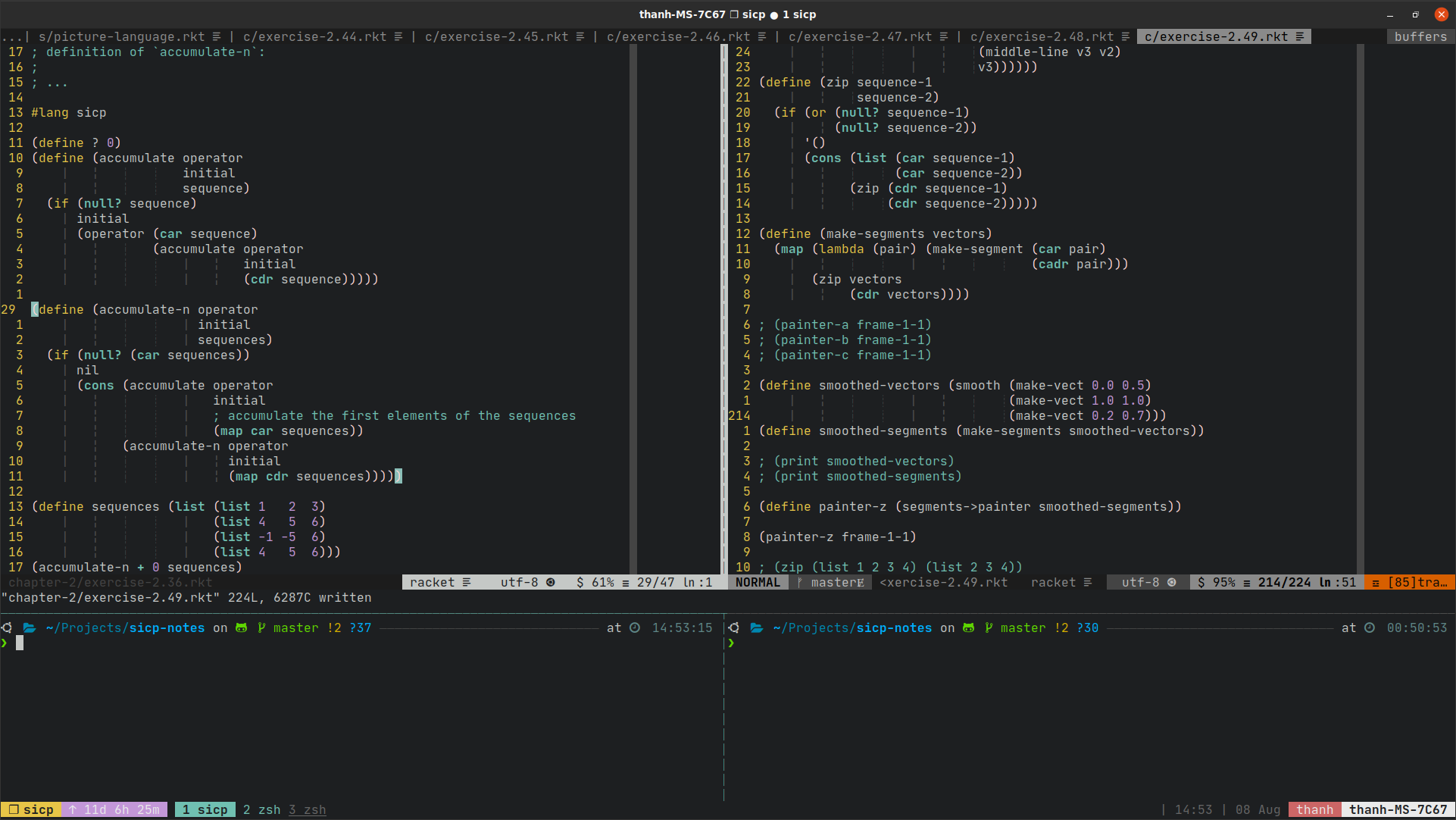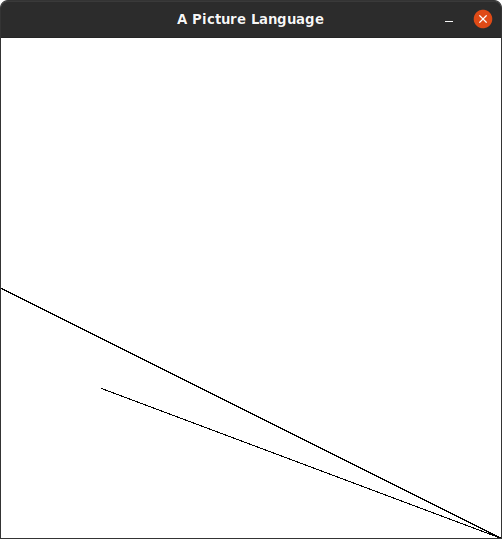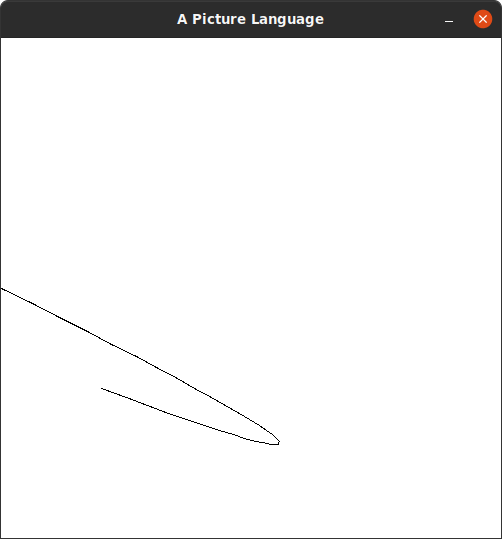SICP 2.49
It’s been a while since I felt that… thrilled working on something. The challenges did not come from the difficulties of the exercise, but rather than that, the… random tooling problem that I had with Racket. More than that, I felt bored at the fourth exercise, so I tried implementing a smoothing procedure. I struggled for a while and finally made it work. Anyway, let us see the problem first.
Description
Exercise 2.49: Use
segments->painterto define the following primitive painters:a. The painter that draws the outline of the designated frame.
b. The painter that draws an “X” by connecting opposite corners of the frame..
c. The painter that draws a diamond shape by connecting the midpoints of the sides of the frame.
d. The
wavepainter.
Making Racket Works
I followed the “modern” way working with Scheme: download Racket and use
DrRacket. The sad thing is DrRacket does not seem to have a decent Vim emulator,
either. I tried Emacs a while ago, but could not spend the time customizing it
more, plus, at the time, I was not too familiar with Lisp either. Therefore, I
resorted to vim-racket, and somehow made an okay workflow with Vim, tmux,
and tmuxp.

A few quirks irk me a lot, but I learned to live with it:
#lang sicpsomehow will make Vim lost its Racket syntax, and it feel damn horrible.- In the expression
if (s1) s2 s3, newline withs2indents two spaces, while the codes in SICP always indent four spaces.
; the "normal" format
(if (s1)
s2
s3)
; the "right" format
(if (s1)
s2
s3)
Copying the sample code into your file probably will not work with Racket,
(define (segments->painter segment-list)
(lambda (frame)
(for-each
(lambda (segment)
(draw-line
((frame-coord-map frame) (start-segment segment))
((frame-coord-map frame) (end-segment segment))))
segment-list)))
as you get a cryptic message:
draw-line: unbound identifier in module in: draw-line
Researching leads you to quite thorough answers on Stackoverflow, which basically is doing stuff to glue the code with Racket’s native drawing. The fix can look like this:
#lang racket
(require graphics/graphics)
(open-graphics)
(define vp (open-viewport "A Picture Language" 500 500))
(define draw (draw-viewport vp))
(define (clear) ((clear-viewport vp)))
(define line (draw-line vp))
(define (vector-to-posn v)
(make-posn (ycor-vect v)
(xcor-vect v)))
(define (segments->painter segment-list)
(lambda (frame)
(for-each
(lambda (segment)
(line
(vector-to-posn ((frame-coord-map frame) (start-segment segment)))
(vector-to-posn ((frame-coord-map frame) (end-segment segment)))))
segment-list)))
Which is similar to the author’s answer, except the better formatting. Also, I
want to send myself in a parallel world—who did the same mistake of not
understanding the implementations—a message. Read carefully what a frame is,
what a vector is, and understand how can two vectors create a new segment.
Understanding the reasons above codes will lead to an easier life that is not
riddled with bugs from copying and pasting code.
Smooth Segments Created By Three “Points”
Originally, we are not asked to do it, but I felt bored with the fourth exercise which involves a lot of manual works. Therefore, I “swapped” it with a better one:
- create a procedure
smoothwhich - takes three “points” (
vectors to be precise), and - returns “smoothed points” between the first point and the third point, which “follows” the second point
- turns the points into segments to visualize
A picture (or two) is worth a thousand words, I guess:
 |
 |
I tried looking up other algorithms, but did not felt intuitive enough about them, so I implemented one that feel “natural” to me anyway. The core idea of my thought is:
- The input is a list of three points (again, in this case they are
vectors, but damn it anyway) - See if the segments are “smooth” enough by checking if the middle of the first point and the third point is “close enough” to the second point
- In the case it is: return the three points
- In the case it is not:
- Smooth the segments from the first point to the second point
- Smooth the segments from the second point to the third points
- Join the two results together
A lot of trials and errors guided me to this implementation:
(define tolerance 0.01)
(define (smooth v1 v2 v3)
; smooth by averages until the distance between v2 and middle of v1 and v3 is
; less than tolerance
(let ((middle-v1-v3 (middle-line v1 v3)))
(if (< (distance middle-v1-v3 v2)
tolerance)
(list v1 v2 v3)
(flatmap (lambda (vectors)
(let
((v1 (car vectors))
(v2 (cadr vectors))
(v3 (caddr vectors)))
(smooth v1 v2 v3)))
(list (list v1
(middle-line v1 v2)
(middle-line middle-v1-v3 v2))
(list (middle-line middle-v1-v3 v2)
(middle-line v3 v2)
v3))))))
A procedure to create segments from points is implemented like this:
(define (zip sequence-1
sequence-2)
(if (or (null? sequence-1)
(null? sequence-2))
'()
(cons (list (car sequence-1)
(car sequence-2))
(zip (cdr sequence-1)
(cdr sequence-2)))))
(define (make-segments vectors)
(map (lambda (pair) (make-segment (car pair)
(cadr pair)))
(zip vectors
(cdr vectors))))
The idea behind make-segments is that we look at the way of “joining”
points as choosing corresponding points of two parallel list:
(list 1 2 3 4 5 6)
(list 2 3 4 5 6)
; somehow, we must turn the two list into
(list (1 2) (2 3) (3 4) (4 5) (5 6))
zip is the one we use here. It creates a new list that are tuples of
same-indexed elements from other lists. zip stops when it exhausts one of
the input lists.
(zip (list 1 2 3 4 5 6) (list 2 3 4 5 6))
; ((1 2) (2 3) (3 4) (4 5) (5 6))
(zip (list 1 2 3 4) (list))
; ()
Conclusion
Just read my Yet Another SICP Advocating. A messy implementation can be found on my GitHub.